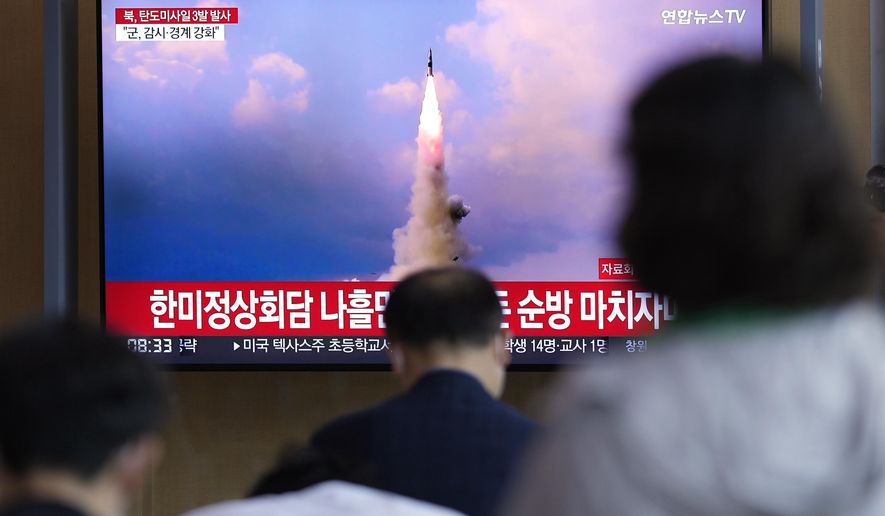OPINION:
Polls show that South Koreans increasingly favor both bringing U.S. tactical nuclear weapons back to the Korean Peninsula and developing an indigenous nuclear capability. But the shift in public opinion seems grounded more on national prestige than strategic considerations.
The newly inaugurated Yoon Suk Yeol administration, like its predecessors, has declared it will not pursue an indigenous nuclear weapons program. But senior officials privately express concern about the U.S. commitment to defend South Korea. Still, there has been little discussion of the details of either option.
The redeployment of U.S. nuclear weapons to South Korean soil lacks military merit. The ground-based weapons removed in the 1990s no longer exist in the U.S. military inventory. Today’s tactical nukes are mounted on mobile air- and sea-based platforms, making them difficult for North Korea to find and target. To place them in a static underground bunker would degrade deterrence and heighten the risk of a North Korean preemptive attack on such high-value targets.
Some have suggested that, if tensions on the peninsula should rise, the missiles could always be moved back to their mobile launch platforms. But doing so during a crisis might be deemed “too escalatory” and, therefore, prevented, thus increasing risk to the population.
A South Korean nuclear weapons program would cause tension with Washington, reminiscent of U.S. threats to break the alliance after the discovery of Seoul’s covert nuclear program in the 1970s. Similarly, the disclosure in the 1990s of an independent South Korean target list of North Korean targets caused bilateral strains with the United States.
Also unaddressed is the question of whether South Korean nuclear weapons would be integrated into the U.S.-South Korean Combined Forces Command and Operations Plan 5015 (the allied strategic plan for a major conflict with North Korea). If so, South Korean nuclear weapons would still be subject to the National Command Authorities of both countries.
Seoul keeping its nuclear force separate from the integrated command structure would raise U.S. concerns about their military concept of employment. What would trigger South Korean use of nuclear weapons and against which North Korean targets? South Korea developing nuclear weapons could lead to calls in Washington for the withdrawal of U.S. forces either due to anxiety of being drawn into South Korean escalatory actions or isolationist perceptions that Seoul could now go it alone.
And then there’s the question of money. An indigenous nuclear program would divert an enormous amount of South Korea’s defense budget away from critical requirements to duplicate an existing capability that the U.S. currently provides. Those defense funds would be better spent augmenting conventional force requirements, as stipulated in South Korea’s Defense Reform Plan 2.0 and the bilateral plan for the transition of wartime operational command.
There are other problems, too. South Korean nuclear weapons would violate the Non-Proliferation Treaty or require Seoul to withdraw from it. Either could expose Seoul to international sanctions as well as curtailment of supply of fissile material from the Nuclear Suppliers Group.
And South Korean pursuit of nuclear weapons could trigger far greater economic retaliation from China than what occurred after Seoul’s 2016 decision to deploy the THAAD ballistic missile defense system.
A South Korean nuclear weapons program would increase the potential for a reciprocal Japanese nuclear program, exacerbating nationalist tensions between the two countries.
South Korea’s advocacy for nuclear options seems born from concerns about the continued viability of the U.S. Extended Deterrence Guarantee. The U.S. has a treaty pledge to defend South Korea, an alliance forged in the crucible of the Korean War. Today, 28,500 of our uniformed sons and daughters serve there, in harm’s way — a living testimony of American commitment. As another sign of reassurance, Washington recently agreed to resume combined military exercises and rotational deployment of strategic assets, both curtailed since 2018.
It’s understandable that any nation will be concerned when it relies on an ally for much of its national security. Any perceived wavering in America’s commitment to defend South Korea would intensify advocacy for nuclear options.
Presidents Biden and Yoon recently reactivated the Extended Deterrence Strategy and Consultation Group, an excellent venue for exploring additional reassurance measures. But basing U.S. nuclear weapons on South Korean soil or developing an independent South Korean nuclear force should not be on the table. Each has a tremendous downside. They are not the right options.
• Bruce Klingner is The Heritage Foundation’s senior research fellow for Northeast Asia. He previously served as CIA’s deputy division chief for Korea.




Please read our comment policy before commenting.